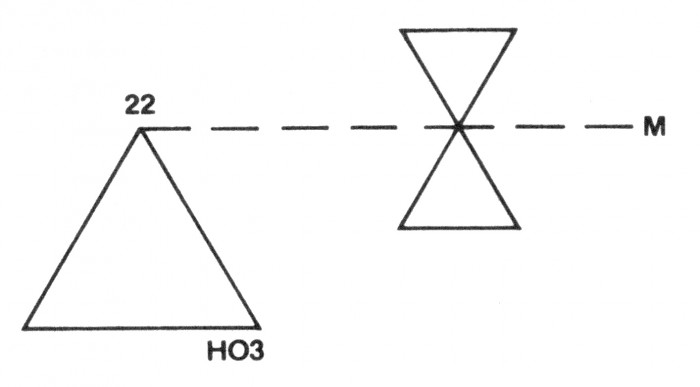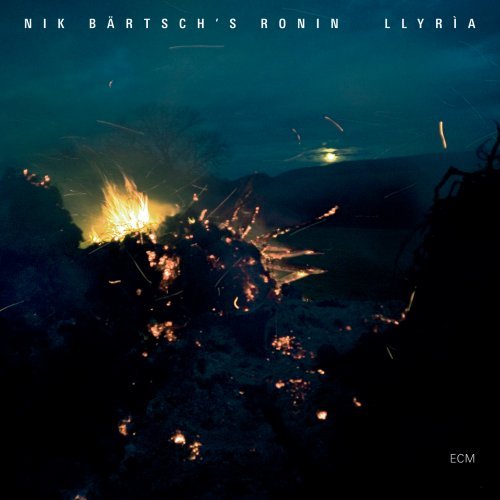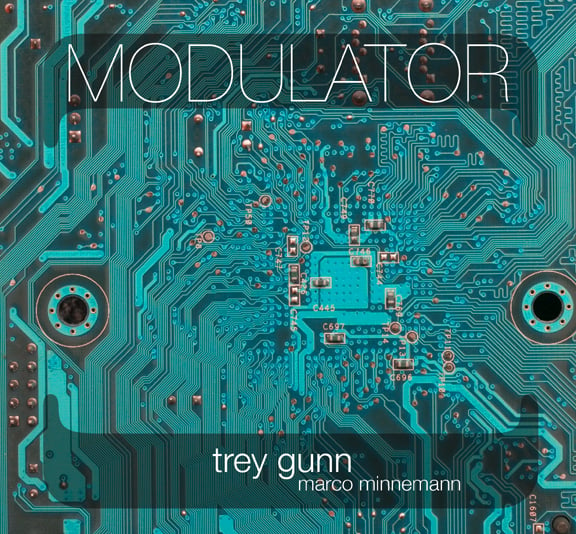Welcome to another edition of Music Diary Reviews! Since I started doing these reviews I have simply collected up stuff from a time period and reviewed it all. For the last few I have separated Jazz, Pop and Re-issues. But still it is just whatever comes along reviewed as it comes along. Don’t get me wrong, there are some awesome releases in there like Mary Halverson’s Saturn Sings. But there were also a couple of recent releases that struck me so much for one reason or other that I simply needed to look at them apart from everything else.
So, with that … let’s take a look at these two special album releases!
Summary: Many years ago before I knew anything about Steve Reich, Philip Glass or anyone else in the minimalist composition school, I was writing music for my college digital music classes that was essentially minimalist. That school of classical composition uses slowly evolving harmonic fragments in a tightly controlled structural range that stack upon each other with loads of space. The effect is something simple yet evolving. While minimalist music tends to be fairly harmonically simple, the same is not true for the rhythms. Listening to Steve Reich’s Music for 18 Musicians reveals this complexity. Since my mind already had leanings in that direction, I immediately fell in love with the minimalists.
What does this have to do with Nik Bartsch’s Ronin? Well, while it is generically ‘jazz’, there is a clear influence of modern classical music and especially minimalism. So from the moment I first heard 2006’s Stoa I was entranced by their music. Bartsch calls it ‘Zen Funk’ or ‘Ritual Groove’ music, which makes it sound much more like dance music than the overlapping rhythmic structures music you will hear. In 2008 Holon arrived and show clear evolution and maturation in every way. Now for 2010 we get Llyria, which again expands on the base, adding more melodic elements but never abandoning the core minimalist sensibilities.
The way Bartsch’s music works is through evolving harmonic and rhythmic patterns in which open space plays a very strong role. The individual musicians have fairly defined roles but there is room for improvisation and creativity within those structures. But because space is SO important, the music feels much tighter than most traditional jazz. There just isn’t the emphasis in open blowing sections so common in most acoustic driven jazz. And that distinction is one thing that I have always loved.
I have seen complaints from fans of Holon about the direction of the changes, that the overt solos by reedman Sha betrays the traditions of Bartsch’s music – and even some saying he is selling out. I call all of that a load of garbage.
It is clear that there is a much stronger melodic presence than in either previous Ronin recording. From the beginning there is a simple but striking melodic feel, but make no mistake: the record also opens with syncopated 7/8 time signatures bouncing off each other. As my son puts it, sometimes it feels like they couldn’t decide which rhythmic structure to build on and decided to just use all of them at once!
Because of the instrumentation and the subtlety, the complex nature isn’t immediately apparent. Bartsch uses muted stabs and coloration to guide the music. Bassist Bjorn Meyer adds a solid pulse but also adds counterpoint to Bartsch. And the percussion section of drummer Kaspar Rast and percussionist Andi Pupato keep things rock solid while also suggesting new areas to explore. Their roles have expanded with this recording, allowing even more exploration within the framework. Sha continues to use his various reeds to punctuate rhythms as well as guide the melody, but as mentioned he spends more time at the fore than in earlier recordings.
Apparently Llyria is the name of a recently discovered sea creature, but it could have been an allusion to the stunning lyricism of the recordings. There is a beauty and immediacy to the music, yet it is no less cerebral than his earlier works. The changes made show a continued growth in compositional skill and an evolution of the Ronin band. I love the changes, but they don’t supersede the amazingness of Holon – they are just another great chapter in the life of this excellent ensemble, producing for me one of the best recordings of 2010. I can’t wait for whatever they do next!
Choice Track (and why): Modul 48 – it is hard to choose any one song, but what I love about this one is the simple melody at the start and how it sets up a rhythm that is immediately contradicted by the rest of the group within a few seconds. The new rhythm has a totally different feel and the hybrid effect conveys multiple emotions at once.
You Might Love This If: You like music with strong and interesting rhythms that are complex but still approachable and are willing to put in the listening time to get the most from this great music.
Here is a video of Nik Bartsch’s Ronin from a 2010 London performance:
Summary: When you think of a 52 minute solo on ANY instrument, what comes to mind? For me, self-indulgence and egotistical showmanship are the first thoughts. So when I got an email telling me that I needed to check out this recording by Trey Gunn with music composed against a 52 minute drum solo by Marco Minnemann, I was skeptical. I knew of Trey Gunn from his time in King Crimson during the 90’s and 2000’s … but I have long since determined that I’m not a huge fan of either of the ‘best’ recordings from that era (Thrak and especially The Power to Believe) and therefore have never sought out any solo stuff by Gunn. Not a very auspicious start for something that ends up as one of my favorite pieces of music for 2010, eh?
Modulator grew out of the ‘Normalizer’ project described in the video, in which multiple composers took on the challenge of composing a full piece of music around Minnemann’s solo drumming work. Thus far only Trey Gunn has completed anything, but what he has done is far beyond the academic exercise that the concept suggests. As you listen, it is easy to forget that this is not a working band playing off each other, but instead the work of multi-instrumentalist Gunn (with help on Violin and ‘Uilleann Pipes’ by Michael Connolly on a couple of tracks), playing against a preset drum track.
There is a reason that Trey Gunn was such a good fit for King Crimson, and conversely much of the signature of the band has worn off on him. Many of the songs here are easily classified experimental prog-rock, but to categorize this work so narrowly really misses the point. Gunn came in to replace Tony Levin, who was the bassist and also one of the innovative users of the Chapman Stick, which was a touch-tap instrument that allowed simultaneous parts across a wide range of tones similar to a simultaneous bass & guitar part (check him out doing the two-part beginning to Elephant Talk ). Gunn was a touch-instrumentalist himself, playing first Chapman Stick and later the Warr guitar – another multi-range touch instrument. He is amazingly adept at both ends of the harmonic spectrum, dropping pulsing bass tracks and searing leads.
As I mentioned, everything is predicated on the drum solo – by design it couldn’t be changed in any way. So it is a good thing that the drum work is widely varied in timbre, rhythm and coloration. This isn’t some massive never-ending bombastic onslaught – Minnemann works well with space, giving Gunn plenty of backbeat, polyrhythms, staggered shuffles, and utter chaos at times. It all plays extremely well, and works within a very musical context. Some of the songs are fragments, others fully realized compositions, still others platforms for Gunns blistering synth guitar.
For all the variety there is inherent cohesion. The entire record flows like a concept album or an extended composition, with obvious references and relationships between different songs. Some of that comes from the drum track, but ultimately the triumph belongs to Trey Gunn. His creativity and ingenuity really do turn this into something that has broad appeal – guitarists and bassists will be there for the technical appeal, fans of improvised rock music will love the creativity, fans of longer form artistic endeavors will find plenty to like, and even those without a direct link to those niche audiences will enjoy the energy and joy expressed here.
Sometimes the enjoyment of a piece of music is as much about expectations as it is the music itself. If you have stellar expectations and the music is merely ‘great’ you will be disappointed. Similarly if you have low expectations and someone releases a ‘great’ recording you will be thrilled. My expectations here were neither high nor low, I really expected a academic exercise over an indulgent, bombastic base. I expected something like Pat Metheny’s ‘Zero Tolerance for Silence’. What I got was something stunning. It is not perfect, as some of the fragments are definitely filler material. But as mentioned, it all works together towards a common goal and can be forgiven. What matters is the total impact, which is altogether wonderful.
Choice Track (and why): Hymn – a large part of this song is a polyrhythmic foundation with shifting time signatures, along with a stabbing chordal pulse that sets up a wonderfully funky syncopated beat. Then it collapses into drum solo chaos before landing safely in the funk groove once again. It is gorgeous and brilliant and every time I hear it I just want to go back to the beginning of the recording again!
You Might Love This If: You like improvised music, prog-rock, or are just curious about what it would sound like if someone had to compose an entire suite of songs over a 52 minute drum solo!
Here is a video of an interview about the ‘Normalizer’ project:
Conclusions
I had thought about doing a sort of ‘Top 10’ list for music, but I really hate those things in many ways. The reason I look at them is not to see ratings and rankings but to see if I missed anything good. What I found was that for jazz I was in good shape with my collection, and the pop/rock ones just made me depressed about the state of those industries.
But folks still ask about my favorites for 2010. It is tough, and most everything on the list I have reviewed here, but I would definitely have Mary Halvorson, the Stanley Clarke Band, Vijay Iyer, and many others.
Definitely high on the list is Pat Metheny’s Orchestrion, which I loved as a recording as well as the fabulous live show.
And then there are these two recordings. With so much stuff on my iPod I tend to reduce what I keep for an artist. For example, Jack Dejohnette had a great group called Parallel Realities with Pat Metheny, Herbie Hancock and Dave Holland. They produced a studio and live recording and both are excellent – but for space I chose to keep just the studio recording and dumped the live set to my backup drive.
Yet with Nik Bartsch’s Ronin I have had Stoa on my iPod for four years, Holon for nearly three, and Llyria shows no signs of leaving soon. Similarly I have a number of songs from Modulator I keep going back to over and over again.
While album sales in 2010 were pretty dismal, that doesn’t tell the whole story. Sadly much of the news is worse – indies got the shaft from eMusic in order to pull in the major labels, there was further major label consolidation, and more and more of the airtime is being bought and paid for to benefit a smaller and smaller set of executives and ‘product’ (they like to call themselves ‘artists’, but we know better).
And yet I see it as one of the best years for jazz in recent memory. Artists have discovered new ways to get their music to audiences, new revenue generation ideas, and more ways to involve their fans. And this has also allowed them to put more time into the music – and the results have been stunning. I can’t wait to see what 2011 has to offer!
Oh … and someone asked a while ago that when I do an abstract image for a lead-in that I explain it a bit. This is the ‘composition notes’ or ‘sheet music’ for Anthony Braxton’s Composition 58 – and shows just how differently he looked at music and how he tried to convey and conceptualize his ideas to other musicians. And when you listen to his stuff … it all sort of makes sense.
Until next time, enjoy the great joys of whatever music you love!




RT @GearDiarySite: Music Diary Reviews: Trey Gunn and Nik Bartsch Produce Two of My Favorite 2010 Recordings http://goo.gl/fb/35r5L